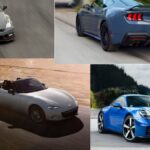
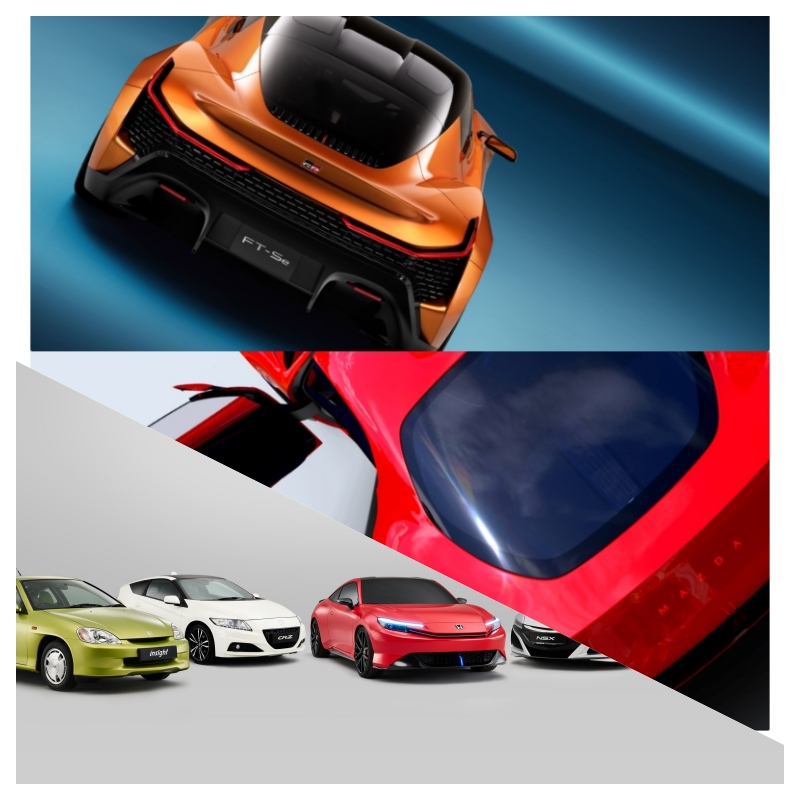
10 Upcoming Japanese Sports Cars Worth Waiting For
Japanese sports cars have etched their names in the automotive mythos as some of the most driver-centric performance machines. Performance cars from the land of the rising sun seem to be making a comeback and these upcoming Japanese sports cars are set reignite the spark in automotive enthusiasts. While Toyota and Nissan have made good progress on that front with models like the GR Supra, GR Yaris, Nissan Z, and other performance models, the below-mentioned upcoming Japanese sports cars are bringing back some of the most iconic nameplates from Japan, and are definitely worth waiting for.
2026 Toyota MR-2 GRMN

Toyota seems to have the most amount of upcoming Japanese sports cars. The car nicknamed “Poor Man’s Ferrari” is making a comeback after a nearly-20-year hiatus. Technically, this nickname was bestowed upon the second-generation, SW20 model. Toyota is on a roll with its performance models of late, and the MR-2 will be one of many iconic nameplates that the company is planning to revive. The 2026 Toyota MR-2 will, once again, be a mid-engine two-seat, sports car, but with a few notable changes.
The main one is all-wheel drive, which will, likely, be a version of the GR-Four system found on the GR Yaris and GR Corolla models. The next big thing is Toyota’s new turbo-four engine, which will make 400 horsepower. The best part is that a manual transmission will be available on the MR-2 GRMN, with an optional seven-speed DCT or eight-speed traditional automatic being optional.
| Engine | 2.0-liter, DOHC, turbocharged, inline-4 |
| Power | 400 horsepower |
| Torque | 550 Nm |
| Transmission | 6-speed manual/ 8-speed automatic or 7-speed DCT |
| Drivetrain | Mid-engine, AWD |
| Curb weight | To be announced |
| 0-60 mph | ~3.8 seconds |
| Top speed | To be announced |
2026 Honda Prelude
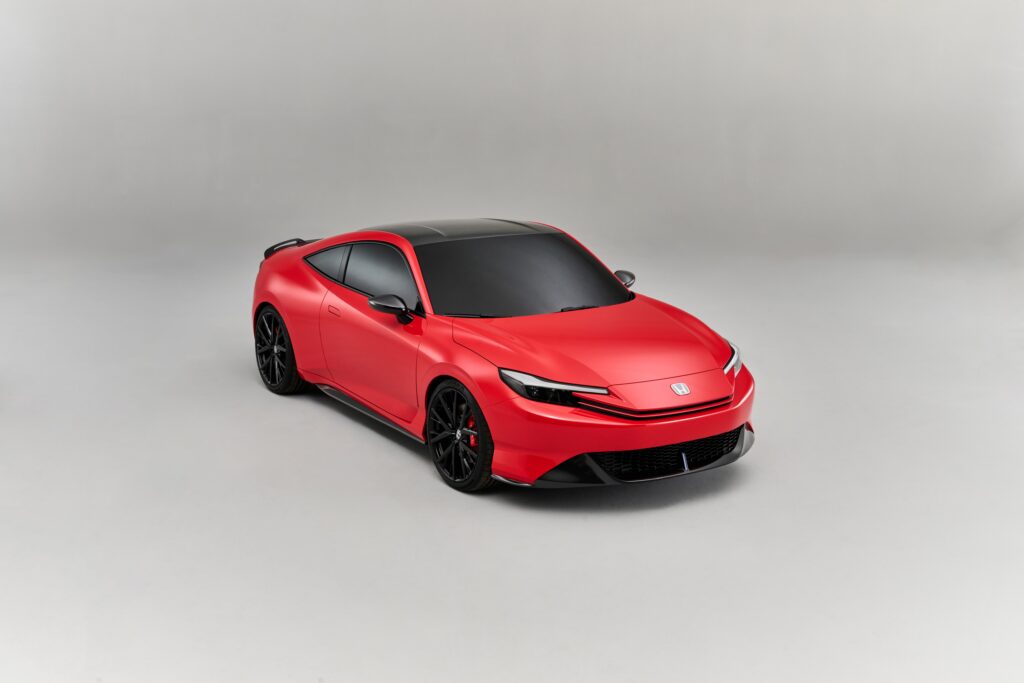
One of the upcoming Japanese sports cars whose return is most intriguing is the Honda Prelude. The affordable Honda sports coupe couldn’t have arrived in a more appropriate time as it will be a competitor to the soon-to-be-revised Toyota GR86, which is said to adopt a hybrid powertrain. Honda’s Prelude Concept showcased a hybrid sports coupe with relatively modest numbers, but recent spy footage may suggest a more powerful variant of the Prelude could be in the works.
In the past, Toyota and Honda were always in the same segment when it came to affordable performance coupes like the Celica and Prelude. We know the Celica is making a return and if the Prelude is going to compete with it once again, it would need more power than what the concept previewed. A similar hybrid setup, but revolving around the K20 turbo-four engine seems like the only logical solution for Honda. As far as upcoming Japanese sports cars go, this one might pack the biggest surprise when it arrives.
| Engine | 2.0-liter, DOHC, inline-4 + 2x e-Motor |
| Power | 220 horsepower |
| Torque | To be annunced |
| Transmission | eCVT |
| Drivetrain | Front engine, FWD |
| Curb weight | To be announced |
| 0-60 mph | To be announced |
| Top speed | To be announced |
2025 Toyota Celica GR Sport
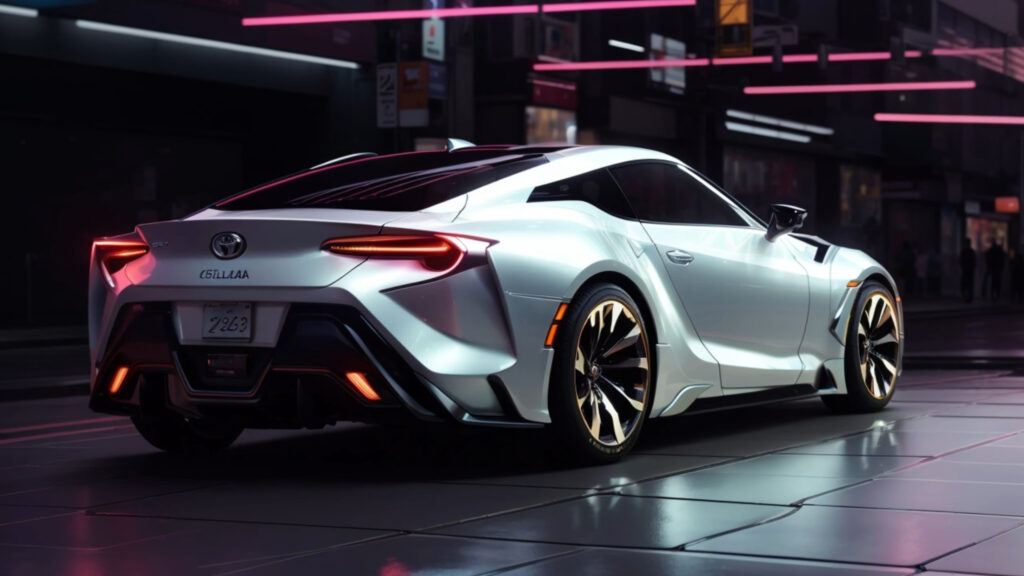
Among the other upcoming Japanese sports cars is another revival of an icon. Toyota Celica GR Sport is set to debut sometime in 2025 and will be a lot different than its previous iterations. It will still be a two-door, two-plus-two sports coupe, but Toyota is gearing for more luxury with the 2025 Celica. Among the highlights of the upcoming Japanese sports car are the GR-Four all-wheel drive and Toyota’s new turbo-four engine, both of which will be shared with the GR MR-2.
The last-generation Toyota Celica was criticized for not offering enough performance and disposing of the all-wheel-drive system, present on older Celica GT-Four models. After nearly 20 years, Toyota is making up for that. The Celica GR Sport is said to be positioned under the GR MR-2, which means it would be the more affordable of the two sports cars. The new Toyota Celica is expected to have less powerful trims, omitting the GR designation. Those will be powered by de-tuned variants of the GR Sport’s 2.0-liter turbo-four, as seen in the new Lexus IS and ES models.
| Engine | 2.0-liter, DOHC, turbocharged, inline-4 |
| Power | 400 horsepower |
| Torque | 550 Nm |
| Transmission | 6-speed manual/ 8-speed automatic or 7-speed DCT |
| Drivetrain | Front engine, AWD |
| Curb weight | To be announced |
| 0-60 mph | ~3.9 seconds |
| Top speed | To be announced |
2025 Suzuki Cappuccino/ Toyota S-FR/ Daihatsu Copen
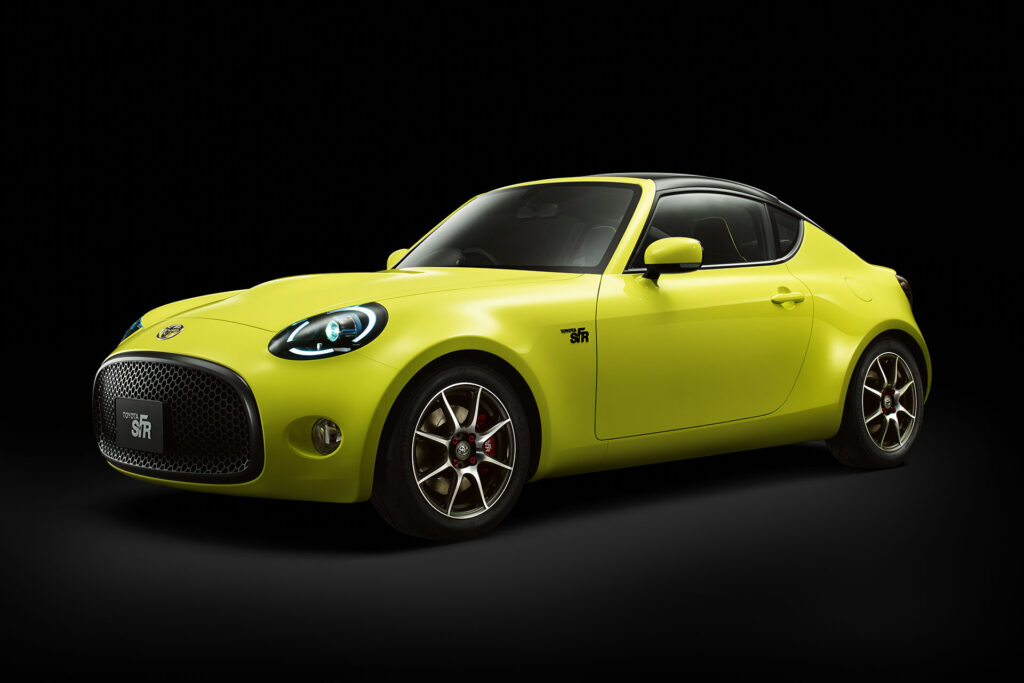
One of the most notable Japanese Kei cars is also among the upcoming Japanese sports cars. The 1990s Suzuki Cappuccino looks like a scaled-down Mazda NB Miata, but in 2025, it is about to become something different altogether. The 2025 Suzuki Cappuccino will be part of a trio as it is co-developed with Toyota and Daihatsu. Not one, but three upcoming Japanese sports cars will share the same underpinnings and likely the same engine.
This means that the Cappuccino will debut alongside the new Daihatsu Copen and Toyota S-FR. All three cars will share the same platform, but will feature completely different styling. There might be some variations in the engine department, between the three models, but overall, we are talking about identical hardware under the sheet metal. Also, these cars will compete with the Mazda MX-5 Miata, so they will no longer be Kei cars.
| Engine | 1.3-liter, DOHC, turbocharged, inline-3 |
| Power | 150 horsepower |
| Torque | 220 Nm |
| Transmission | 6-speed manual/ 8-speed automatic |
| Drivetrain | Front engine, RWD |
| Curb weight | 1,100 kg |
| 0-60 mph | To be announced |
| Top speed | To be announced |
2026 Mazda RX-7

When talking about upcoming Japanese sports cars, one of the most eagerly awaited debuts is that of Mazda’s new, flagship, rotary sports car. We don’t yet know if Mazda would call it RX-7 (probably not), but the overall styling and philosophy are strikingly close to Mazda’s FD RX-7. Mazda spent significant time sorting out the inherent disadvantages of the rotary engine, but patents suggest a rotary sports car is almost upon us.
The rotary engine will be the primary source of motivation for the Japanese coupe, but it will be assisted by three electric motors – two powering each of the front wheels and one between the transmission and Wankel unit. This also means Mazda’s rotary sports car will have all-wheel drive. While not yet confirmed, the Mazda RX-7 successor will, likely, feature the company’s new eight-speed automatic. Among the plethora of upcoming Japanese sports cars, Mazda’s new rotary model has the potential to be the most ground-breaking.
| Engine | 2×830 cc, twin-rotary + 3x e-Motors |
| Power | 350-400 horsepower (estimated) |
| Torque | To be announced |
| Transmission | To be announced |
| Drivetrain | Front mid-engine, AWD |
| Curb weight | 1,350 kg (estimated) |
| 0-60 mph | ~3.8 seconds (estimated) |
| Top speed | To be announced |
2026 Lexus LF-R
When talking about upcoming Japanese sports cars, few models took as long to arrive as Lexus’ V-10 supercar. The Lexus LF-A took the world by storm. When Toyota and Lexus were still viewed as brands making sensible, reliable vehicles, they brought out one of the most orgasmic superstars we have come to know. The sequel to the LF-A is previewed by the Lexus LFR, which at this point in time, is in its late development stages.
The new Lexus flagship sports car will feature a plug-in hybrid powertrain, revolving around a powerful V-8 engine. The system output will be a lot more than what the 553 horsepower the Lexus LF-A V-10 engine makes. At the same time, Lexus promises a range of 700 km before it needs recharging and refueling. The new Japanese supercar will feature an aluminum chassis and carbon-fiber body. Aside from one other model (featured below), Lexus’ new flagship supercar could be one of the most potent, upcoming Japanese sports cars.
| Engine | 4.0-liter, DOHC, twin-turbo V-8 + 2x e-Motors |
| Power | 720 horsepower |
| Torque | over 950 Nm (estimated) |
| Transmission | 10-speed automatic |
| Drivetrain | Front mid-engine, AWD |
| Curb weight | 1,350 kg (estimated) |
| 0-60 mph | 2.2 seconds |
| Top speed | To be announced |
2026 Toyota GR86

The next-generation Toyota GR86 is said to debut around 2025 and for better or worse, it will be very different than what we currently have. It would still be a compact sports coupe, but the powertrain would be very different. The first modern iteration of the 86 was not very quick, which is why the GR86 was among the most anticipated, upcoming Japanese sports cars a few years back.
Toyota will no longer make its entry-level sports car in cooperation with Subaru, which is why the next-generation GR86 will feature the 1.6-liter turbo-three unit, featured in the GR Yaris and GR Corolla. That’s not all. The three-cylinder engine will be a part of a hybrid system, featuring a single electric motor. To keep things as lightweight as possible, Toyota will, likely, employ a mild-hybrid system where the electric motor is housed in the transmission.
| Engine | 1.6-liter, DOHC, turbocharged inline-3 |
| Power | 300+ horsepower |
| Torque | 400 Nm (estimated) |
| Transmission | 6-speed manual/ 8-speed automatic |
| Drivetrain | Front engine, RWD |
| Curb weight | 1,350 kg (estimated) |
| 0-60 mph | 4.2-4.5 seconds (estimated) |
| Top speed | To be announced |
2026 Mazda MX-5 Miata
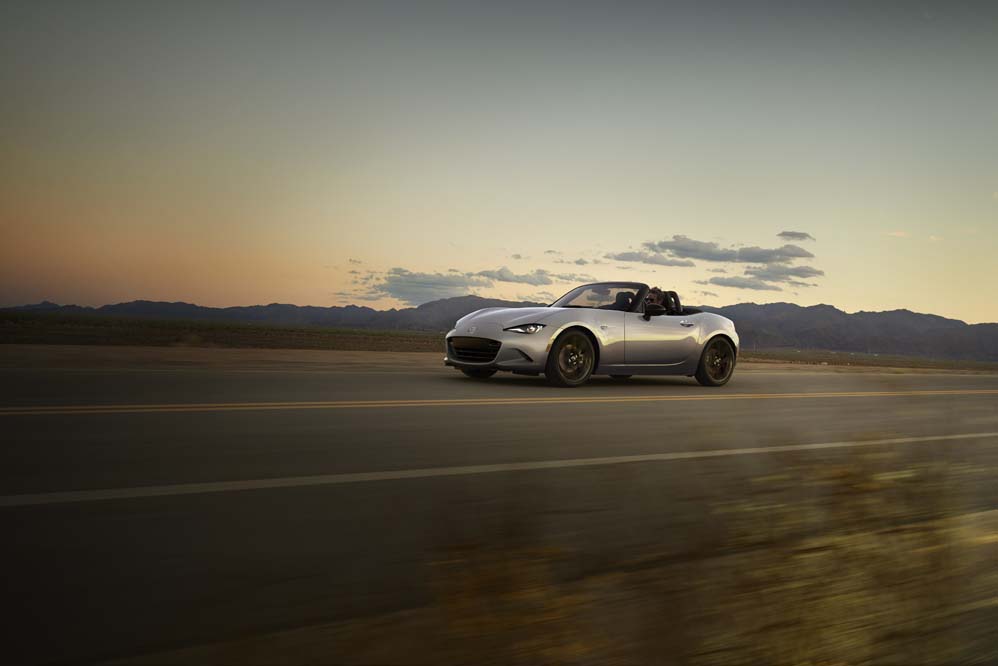
Mazda MX-5 Miata is the quintessential, compact Japanese sports car and in 2026, it too will experience a significant change. Back in 2023, we stumbled upon a scoop by the Japanese publication BestCarWeb that uncovered some interesting details about the future Mazda MX-5. According to the latest information, the next-generation Mazda Miata will be electrified.
Mild hybrid powertrains are slowly becoming the standard in propulsion and Mazda’s compact Japanese roadster is, reportedly, adopting such a powertrain. But fear not, as Mazda will still keep the iconic roadster lightweight and nimble. Mazda engineers are gunning for over 100 horsepower per litre and a curb weight of under 1,000 kilograms, so in 2026, we will see the most powerful Miata ever made. The next-generation Mazda MX-5 is among the most fervently awaited, upcoming Japanese sports caras as enthusiasts are curious how hybrid tech will meet the Miata’s lightweight philosophy.
| Engine | 2.0-liter, DOHC, naturally-aspirated inline-4 |
| Power | 200+ horsepower |
| Torque | To be announced |
| Transmission | 6-speed manual/ 8-speed automatic |
| Drivetrain | Front engine, RWD |
| Curb weight | ~1,000 kg |
| 0-60 mph | 5.2-5.5 seconds (estimated) |
| Top speed | To be announced |
2026 Toyota GR Supra

It already sounds like 2026 will be a very interesting year for Toyota. The Japanese brand is set to release a number of exciting models as well as to revive iconic nameplates like the MR-2 and Celica. At the same time, the GR Supra is expected to get its sixth iteration, and rumour has it will be a hybrid and will no longer share a platform with the BMW Z4.
Since Toyota currently doesn’t have an inline-six engine of its own, power would likely come from the newly-developed, turbocharged, four-cylinder engine. As far as upcoming Japanese sports cars go, this one might be the most controversial. Details are still vague so a lot of things may change as seen by previous Toyota models. As far as upcoming Japanese sports cars go, the sixth-generation Supra might be the biggest surprise in 2026.
| Engine | 2.0-liter, DOHC, turbocharged, inline-4 hybrid |
| Power | 400+ horsepower |
| Torque | 550+ Nm |
| Transmission | 8-speed automatic |
| Drivetrain | Front engine, RWD |
| Curb weight | 1,550 kg (estimated) |
| 0-60 mph | 3.7 seconds (estimated) |
| Top speed | To be announced |
Nissan GT-R R36
The Nissan GT-R is one of the most iconic JDM sports cars ever made. The combination of motorsport heritage, unconventional engineering, performance for the money (except the overpriced NISMO), and the fact you can use it on a daily basis makes the Nissan GT-R a proper JDM icon. Then, there is the question of tuning potential, which puts it in hyper car territory, provided your pockets are deep enough. Regardless, there will no longer be an R35 Nissan GT-R after 2025 as the model is engine production, after 18 years.
Nissan says regulations are to blame, which is why the next-generation GT-R will, likely, be a hybrid. Last year, former Chief Planning Officer of Nissan, Philippe Klein, said “Yes, you guys have to be patient because we will meet your expectations. The driving experience is a high priority, and as we move from gasoline engines to hybrids, nothing will be lost in the fun of driving, even if we go electric. For these reasons, it is certain that the announcement of the next model has been postponed”.
Add a comment Cancel reply
Comments (2)
6 Popular Sports Cars for Sale in India: Future Classics of Popular Sports Cars
[…] sports cars, despite the substantial array of clever tech. The R36 generation is already one of the most highly anticipated Japanese sports cars, but everything points to it being a hybrid, meaning the R35 will be the last of the old […]
8 Future Classic Cars From The 2000s That Offer Luxury And Performance
[…] service records are not available. These luxury barges may not be as athletic as some of the upcoming Japanese sports cars, but these 2000s cars have the badge and the […]
Categories
- Aftermarket Modifications (2)
- American Cars (1)
- American Muscle Cars (1)
- Auto Detailing (1)
- Car News (8)
- Car Reviews (1)
- Classic Cars (4)
- EV (2)
- Hybrid vehicles (2)
- JDM Cars (6)
- Motorcycle Accessories (2)
- Motorcycles (3)
- New Cars (10)
- Sports Cars (7)
- Used Cars (4)
- Used Vehicles (4)
- Vehicle Guide (7)
- Vehicle Purchase (6)
Recent Posts
Popular Tags
Related posts


6 Popular Sports Cars For Sale In India That Are Future Classics

If Your New Honda Hybrid Powertrain Makes This Noise, Do Not Panic, There Is A Good Reason

8 Luxury Sports Cars From The 2000s That Could Become Future Classic Cars
About us
Follow us
Cars by state
- Used cars in Andhra Pradesh
- Used cars in Arunachal Pradesh
- Used cars in Assam
- Used cars in Bihar
- Used cars in Chandigarh
- Used cars in Chhattisgarh
- Used cars in Dadra and Nagar Haveli
- Used cars in Delhi
- Used cars in Goa
- Used cars in Gujarat
- Used cars in Haryana
- Used cars in Himachal Praddesh
- Used cars in Himachal Pradesh
- Used cars in Jammu and Kashmir
- Used cars in Jharkhand
- Used cars in Karnataka
- Used cars in Kerala
- Used cars in Madhya Pradesh
- Used cars in Maharashtra
- Used cars in Manipur
- Used cars in Meghalaya
- Used cars in Mizoram
- Used cars in Nagaland
- Used cars in Odisha
- Used cars in Puducherry
- Used cars in Punjab
- Used cars in Rajasthan
- Used cars in Tamil Nadu
- Used cars in Telangana
- Used cars in Tripura
- Used cars in Uttar Pradesh
- Used cars in Uttarakhand
- Used cars in West Bengal
- Used cars in Andaman and Nicobar Islands




